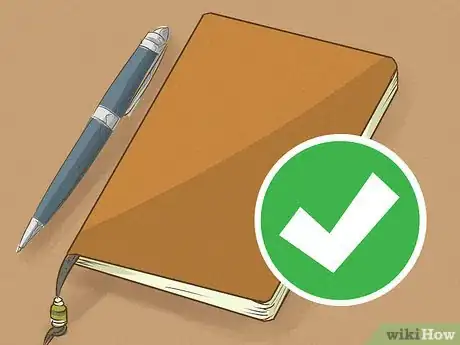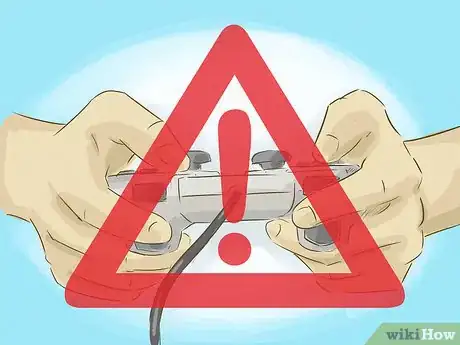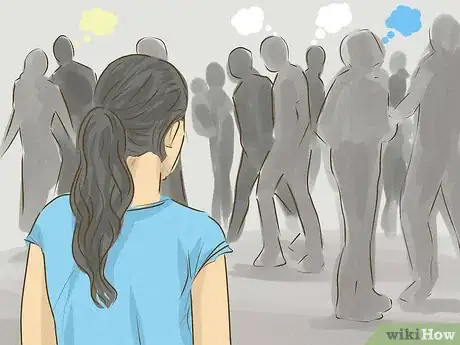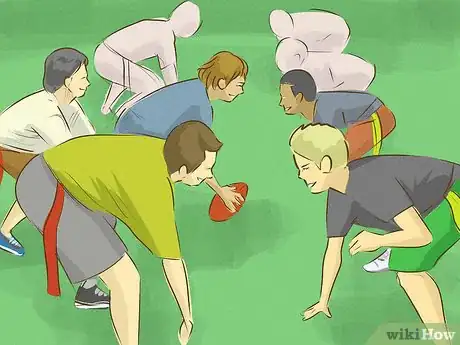This article was co-authored by Trudi Griffin, LPC, MS. Trudi Griffin is a Licensed Professional Counselor in Wisconsin specializing in Addictions and Mental Health. She provides therapy to people who struggle with addictions, mental health, and trauma in community health settings and private practice. She received her MS in Clinical Mental Health Counseling from Marquette University in 2011.
This article has been viewed 114,885 times.
When you're shy, it can be hard to enjoy life. You might feel isolated or limited. It is entirely possible to overcome your shyness. Just remember some people are naturally shy. However, your shyness should not inhibit your life. By taking a few steps to conquer this feeling, you might find yourself able to be more outgoing.
Steps
Recognizing Your Patterns
-
1Determine how your shyness works. There are different ways people are shy. You can be shy in more than one way. Seeing the forms of your shyness can help you focus your effort to overcome it. If you are not a medical professional qualified to diagnose psychological conditions, then you will need to see one in order to find out which of these apply to you:
- Anxious shyness includes not just social anxiety, but also extends to social phobias.[1] These conditions can be managed by a therapist, psychiatrist or other properly licensed individual.
- Introversion gets often cited in cases of shyness. Shyness related to introversion is very common, and may exhibit itself in roughly 50% of the population to some degree or other. This is a personality trait, and can be managed with regulated extroversion (building extroverted skills and traits).
-
2Keep a dated journal. Record your experiences of shyness and your attempts to be outgoing. Write down how you feel and as many details as you can remember. You can look at your journal later to see if any strong patterns emerge.
- Make this a daily habit, if possible. Incorporate it into your routine. Give yourself a treat for completing a journal entry to solidify it into your daily routine.
- Be honest with yourself. If you catch yourself trying to rationalize what you're saying, chances are, you could dig a bit deeper into the true meaning of what you're trying to express. Instead, try and state it as plainly as possible.
- Pay special attention to how you feel. Mark your emotions when you feel them. This way you can take control of your feelings.
Advertisement -
3Watch for isolating habits. What you choose to do can have a big impact on how much you interact with other people. Staying at home instead of going out means there will be very little opportunity to socialize. When you do this all the time, you get used to it.
- Ditch your mobile phone. [2] Leave it at home when you go out. Put it in the freezer or microwave (no cooking) for a few hours, until you forget about it. You're more likely to talk to other people.
Breaking Your Barriers
-
1Reframe your perspective. Understand that no one thinks about you as much as you do. It's liberating when you realize that no one dwells on every little mistake you make. They're thinking about themselves and their mistakes. Keep this in mind, as it may help you to feel more comfortable.
-
2Seek situations that require social interaction. If you're trying to be more outgoing, the best way to ensure your success is if you go out and put yourself into different situations where you have the opportunity to interact with other people. Put yourself out there. Go to events or places where you are likely or ensured social interaction.
- Join a weekly club. Look online or call your local community center. By spending time with people based upon a shared interest, you are more likely to have something to talk about.
- Pick a hobby, like martial arts or team sports. Physical, group activities don't require as much socialization as other activities, but they do require some. This can increase your socialization without going overboard.
-
3Set challenging yet realistic goals.[3] Don't feel you have to become a social butterfly right away. Relish in the little victories. Take little steps toward being social at first. As you get more comfortable, add greater social adventures.
- Start with saying “hello” to a random stranger or telling someone you like their fashion. Decide ahead of time what you want to try, and practice a bit in the mirror or with a trusted friend, a family member, or a therapist. This will help you feel more at ease so when the opportunity does arise, you can feel more comfortable with reaching out.
- Work towards asking someone on a date or inviting them over for dinner. If you can't bring yourself to ask them in person, write him a note or send a text.
-
4Repeat experiences that you like. It gets easier every time you do it, so you must persist.[4] When you have fun at a party, on a date or out with friends, make an effort to do it again. This way you will reinforce that good feeling. If that still seems like a big step, think about an activity that will help you feel more comfortable with asking a person out, such as going out for coffee, or something fun like going roller skating. Make sure to choose an activity you find comfortable.
-
5Make up excuses to talk to people. Go to a public place and challenge yourself to ask someone for help or for information. You might need to be creative for this. Spend a moment in whatever setting you choose to concoct a topic or question.
- Ask someone in the grocery store for an opinion on a food item.
- Ask someone for directions, even though you might know where you're going.
- Ask someone to help you carry something even though you might be able to manage on your own.
Taking It Step by Step
-
1Establish a reward system. Reinforcing your successes is an important part of solidifying new habits. Tell yourself that you'll treat yourself only if you talk to this specific person, or have a nice conversation with a stranger.
-
2Get a friend to help. Sometimes it is not as easy to be social. This is when a friend can help. A more social friend or even a family member can help. Ask them to be your cheerleader, but also help you find ways to be more outgoing.
-
3Think of activities you can do that are a little comfortable to start with. Visualize going through the steps and then practice different interactions with a person you trust. You can start with small interactions like saying hi to an acquaintance and then build from there by saying hi to a stranger. From there, you can talk about the weather, give a compliment or ask for the time. Use body language to show that you are open to more conversation and see how the interaction develops.[5]
-
4Find the right professional to talk to. In certain situations it may be necessary to find a professional. There are different kinds of people who can help you. Depending on how shy you are, you may need more than one kind of help.
- Therapists can help you see patterns in your behavior. Cognitive therapy has been shown to measurably help with shyness.[6]
- Relationship counselors specialize in helping people express themselves in intimate relationships.
References
- ↑ http://hsw.oxfordjournals.org/content/27/2/137.abstract
- ↑ http://connection.ebscohost.com/c/articles/95739129/effect-addiction-communication-tools-feelings-shyness-loneliness
- ↑ http://www.une.edu.au/about-une/academic-schools/bcss/news-and-events/psychology-community-activities/helping-young-children-overcome-shyness
- ↑ http://www.nature.com/scitable/topicpage/overcoming-shyness-13996086
- ↑ www.actonsocialanxiety.com/pdf/Introduction.pdf
- ↑ http://www.ajol.info/index.php/ifep/article/view/91285













-Step-17.webp)






















-Step-17.webp)




































